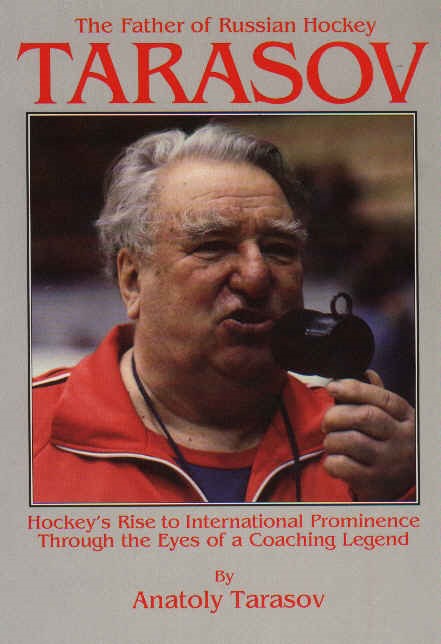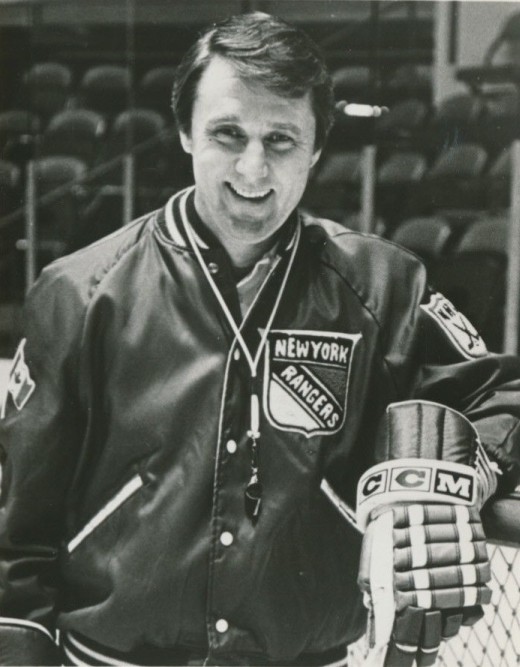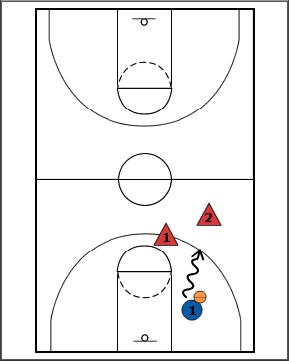Develop Better Basketball Decision Makers With Russian Hockey Super Coach and Herb Brooks
In this article, you will find a lot of tips, drills, and advice to elevate your player’s decision-making, skill development, and performance.
But first, I want to talk about some lessons from a hockey coaching legend. This Russian super coach was ahead of his time. I think you’ll really enjoy it.
(Also, on a side note, I do realize that it was the Soviet Union, but I’m using Russia interchangeably.)
How Herb Brooks Learned From The Russian Super Coach... To Beat The Russian Super Team
A few years ago, I watched a 30 for 30 film on the Russian hockey teams of the 70s, 80s, and 90s. I am clueless when it comes to hockey. However, I know that those hockey teams are considered as some of the best of all time. Those time periods are often referred to as Russia’s golden age for hockey.

At the foundation of these hockey teams was a coach named Anatoli Tarasov. He is considered “the father of Russian hockey” and was one of the first Russians inducted into the Hockey Hall of Fame.
He was also famous for revolutionizing the game with non-traditional training methods and coaching strategies.
According to Jack Blatherwick Ph.D., who was Herb Brooks’ assistant coach on the 1980 U.S. Olympic “Miracle” hockey team, Herb Brooks studied the Russian hockey teams that Tarasov coached.
Brooks admired the way Tarasov’s teams played and incorporated similar methods with his 1980 “Miracle” team. Coach Brooks used the Russian coaching methods to beat the great Russian team.
And 1980 would be the first year that Tarasov was not the Russian coach due to political reasons. Coincidence that Russia lost... I think not.
Well, let’s dive into how these great coaches accomplished this and how you can apply it to basketball and other sports.
How Did Anatoli Tarasov and Herb Brooks develop quick decision makers?
“Speed of hand, speed of foot, speed of mind. The most important of these is speed of mind. Teach it.” - Anatoli Tarasov
As basketball coaches, we all want quick decision-makers. The ability to pass, shoot, or attack before the defense can rotate is extremely effective for basketball teams.
If you watch the Golden State Warrior or San Antonio Spurs, you know exactly what I’m talking about.
Here are a few methods that Tarasov and Herb Brooks used:

1. They embellished a creative atmosphere.
The coaches tried new things and created new drills that weren’t traditional. They thought of a skill and created fun, competitive to drills and games to improve particular skills.
Tarasov once said: “If a training period does not offer a creative atmosphere or depth in grasping a particular topic, if it does not stimulate the player to a higher level of technique, and finally, if you can feel that the players are not ready to do battle, if they show no hustle or daring, you should not expect such a team to improve its game.”
And they spent hours practicing drills and games that developed quick decision-making abilities.
Tarasov wanted to create players that knew what to do with the puck before they received the puck. He encouraged anticipation.
2. Encouraged mistakes from players through trial and error.
By allowing your players to learn through trial and error and a lot of repetitions, this naturally teaches them what works and what doesn’t. Also, by allowing self-learning, your players maintain an aggressive, assertive mentality.
You end up with aggressive players who can make good decisions.
If you second-guess and correct EVERY decision a basketball player makes, you end up with a scared, slow-reacting player. This is the classic case of over-coaching.
It’s what I refer to as the “Chess Coach”. They try to instruct every little action the players make on the floor. They develop input-required robots instead of “coachless players”.
The “coachless player” would do the exact same things on the basketball floor whether I was standing on the sidelines or decided to walk out to the concessions to grab a hot dog and chat with the custodian during the middle of a game.
3. The Mental Overspeed Training System was used.
Herb Brooks used a system that he emulated from Tarasov referred to as overspeed training. It was creating environments where decision-making had to occur at an uncomfortable pace.
This was meant to prepare them for the game, and if possible, make it more difficult than the actual game. They did this because they knew the actual game created environments and a pace of decision-making that was very difficult to emulate in practice due to the adrenaline factor.
However, there is also a balance because too much error can affect confidence. It’s kind of a seesaw method of pushing a little too much to challenge the players and pulling back a tiny bit to create successful results.
If you ever watched a Bobby Knight practice, he used a similar approach. His conversions from drill to drill are quick and frantic. Coach Knight made practice situations
more difficult than game situations.
The Drills and Tips To Develop Better Decision-Makers
"The more they think, the slower their feet get" Jerry Tarkanian. Simplify.
This was a twitter post was from the Late great Don Meyer. You have one coaching great in Don Meyer quoting another coaching great in Jerry Tarkanian.
Step 1 - Develop Aggressive, Assertive Players with Attack & Counter Method for Individual Offense
I am firm believer that the most aggressive, confident players are the most effective players, even if this means they make the “academic” wrong decision at times.
I believe players are better when they’re in attack mode, in control, and playing instinctively.
If you sacrifice confidence and an aggressive mentality to make the “correct read”, I believe you’re doing a disservice to the player and the team.
For example, I don’t get caught up on things, well the defensive player was shaded slightly to your left, and you should have gone right. I think that’s something they learn through experience and repetition.
James Harden might not be one of the best one-on-one scorers in the world if he took this advice.
And you have to be careful not to over-correct.
Over-correcting can cause over-thinking and lead to hesitant, non-aggressive players with low self-confidence. This was a common mistake I made when I started coaching. I still catch myself and have to bite my tongue.
You have to allow them to learn through repetition and some timely advice. This takes personalized coaching because every kid has a different personality. I’m still learning how to do this.
I want the players thinking, “Shot isn’t open. Attack.”
At first, there are more mistakes and it’s messy. However, the end product is better and more effective.
Like Don Kelbick teaches in his Attack & Counter Skill Development System, for individual offense, I like to teach mapping progressions that accelerate reaction speed.
- Shooting immediately if you are open and it is a good shot for you.
- Attacking immediately via the drive if the defense takes away your shot.
I believe you should practice and strive to be good at the most important skill sets.
- Practice going both directions.
- Practice using both feet.
- Practice finishing with both hands.
- Practice moves and counter moves.
- Practice different counters for moving without the ball.
- And practice getting outside of your comfort zone and make mistakes!
These articles expand more on the Attack & Counter philosophy:
How To Accelerate and Simplify Player Development To Win More Games
This Instantly Improves Decision-Making, Aggressiveness, & Makes You a Better Scorer
The Most Dangerous LIE In Basketball?
This Secret To Counter Moves Improves Shooting Percentages & Offensive Efficiency
How This Surprising 79% NBA Study Can Dramatically Improve Your Drills, Practices, and Workouts
Kobe Revealed To A Group Of Teens His Biggest Secret To Being Unstoppable. And It's Genius.
Consequence of Choice How This Phenomenon Affects Your Players
“I practice as if I’m playing a game, so when the moment comes in the game, it’s not new to me. That’s the beauty of the game of basketball, that’s the reason why you practice, that’s the effort. So when you get to that moment you don’t have to think, instinctively things happen.” - Michael Jordan
“I found myself thinking about it more, rather than playing instinctively. In the second half, I decided to do what I could do, and I started to play without really thinking about it." - Michael Jordan
Step 2 - Incorporate Small-Sided Games With Defenders
To continue to develop this mentality, I will start to incorporate game-like drills with 1 and 2 defenders.
You should use plenty of small-sided games that encourage skills you want to develop. 1 on 1, 2 on 1, 2 on 2, 1 on 2, 3 on 2 Competitive Drills.

Drill: 1 v 2 Ball Handling
For example, when a player has developed a comfort in ball handling skills and can easily beat their defense in 1 on 1 drills, you might use 1 ball handler versus 2 defenders. You might play 2 v 3.
A way to provide some overspeed training would be to add a shot clock to the 1 on 2 drill. Start with 10 seconds, then 8 seconds, and then 5 seconds.
A funny thing I noticed is that when I did the 1 on 2 drill with a 5 second shot clock, the players actually were more effective than when I went back to the 10 second shot clock.
They were more aggressive and were playing instinctively because they were thinking less. Pretty much what we talked about in the points above.
Drill: 1 v 1 Fast Break Finishing
Here is one that I like for ball handling and finishing out of the fast break.
Drill: 2 v 1 With Trailing Defender
Here is another progression with Coach Jim Huber that you can teach out of the fast break.
With these drills, you have to be careful not to over-coach. You need to allow time for errors.
This learning process is messy. It’s not a straight line. So if you are a recovering control freak like me, bring a muzzle to practice.
Step 3 - Add Team Play
“Coaching, like teaching, is a matter of creating an environment where students can learn. A great teacher is one who helps the student grow to the point where they no longer need the teacher.”
- Bud Grant, former coaching great for the Minnesota Vikings football team
Next, I will incorporate team play and more passing.
To encourage passing and team play, I add the rule of “If your teammate has a better scoring opportunity, immediately pass the ball.”
Then I progress through some of these drills below.
Drill: No Dribble
To encourage passing, you can play 3 on 3 or 4 on 4 with no dribbling.
Drill: Passing Competition - Time Limit
Next, you play half court 3 on 3 or 4 on 4. You see how many passes a team can get in a designated time such as 30 seconds, 45 seconds, or 60 seconds.
Drill: Quick Decisions - Time Limit / 3 on 3 Tarasov Rush
Next, you can play 3 on 3 or 4 on 4 with Quick Decisions. This emulates a hockey drill called 3 on 3 Rush by Tarasov.
Now, you allow them to do whatever they want... shoot, dribble, or pass. However, they must make a decision after X amount of seconds.
With beginners, you might do 2 seconds. They must pass, shoot, or dribble within two seconds of receiving the ball.
After a little bit of time, you can advance to 1-second decision-making.
A 3rd progression would force immediate decisions. If you do not immediately pass, dribble, or shoot, it’s an automatic turnover.
This forces the ball handler to anticipate and attack immediately. It forces players without the ball to anticipate when to cut and get open to keep the ball moving.
Drill: 3 Ball Reversals
Here is a drill from Don Kelbick that emphasizes ball reversals and moving the ball.
Some coaches will also perform some of these progressions without a defense at first to build habits and confidence. That’s up to you and your coaching philosophy.
Step 4 - Emphasis of Quick Conversions and Decision-Making
In the normal game of basketball, there are normally stoppages in play. However, since my goal is to make practice more difficult so the game feels easy, I will incorporate drills that push players outside their comfort zone.
A side benefit to these drills is that your players start playing instinctively.
Drill: 3 on 3 Cut Throat
You have three to four teams of three players.
Two teams start the drill. One to two teams are out of bounds waiting for their turn.
If the offense scores, the defense rotates to the end of the line and the next group sprints in.
If the defense gets a stop, the offense rotates to the end of the line. The defense becomes the offense and the next group comes in and plays defense.
After a score or change of possession, the new offensive team will immediately pass the ball back to the coach who immediately passes the ball to one of the offensive players. This forces the players to quickly communicate and make decisions from an offensive and defensive standpoint.
You can also use the Whistle Drill. On the whistle, the offense drops the ball, the defense immediately picks it up and is on offense. The player who drops the ball cannot guard the ball. This forces the offense and defense to communicate and make quick decisions.
Drill: Tarasov 3 on 3 with Wild Card
This is another drill I emulated from Tarasov.
With this drill, you play 3 on 3 with a wild card player that gives you an extra offensive player.
At the start of the drill, the offense starts immediately with 4 players.
On a change of possession, the defensive team has to get the ball to the wildcard player before they can look to score.
You can also add a shot clock or some of the 2-second, 1-second, or immediate decisions with the ball to continue to add difficulty to the drill.
This will encourage spontaneity, creativity, and quick-decision making.
Drill: 5 on 3 Plus 2
For transition offense, I really like this drill from Don Kelbick.
It forces them to make quick decisions. If too many passes or dribble occur, they lose the advantage.
Also, it teaches them how to transition into half court offense if the defense does a great job of recovering.
Resources To Help You Develop Better Decision-Makers, Shooters, Ball Handlers, and Passers!
Personally, these are the resources I use to develop skills, offense, and decision-making.
For developing shooting, ball handling, footwork, mentality, aggressiveness, I teach Don Kelbick’s Attack and Counter Skill Development Video.
Next, I complement the skills and mentality taught with some competitive drills.
30 Competitive Skill Building Drills is a great resource for drills with one and two defenders. It will also spur plenty of ideas for solutions to problems that you may have with your team.
For offense, Don Kelbick shows you how to build on offense conceptually with his Motion Offense video and his Zone Offense video.
To get better in transition and score some easy baskets, check out Don Kelbick's Transition Offense and the Four-Second Fast Break.
I also really like Brian McCormick’s books... Developing Basketball Intelligence and The 21st Century Practice. These will give you ideas and drills to create smarter basketball players.
Do you have any questions or suggestions? Let us know by leaving your comments...
|
|||||||||||||



 Facebook (145k Followers)
Facebook (145k Followers) YouTube (152k Subscribers)
YouTube (152k Subscribers) Twitter (33k Followers)
Twitter (33k Followers) Q&A Forum
Q&A Forum Podcasts
Podcasts